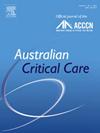周期测力仪在体外膜氧合患者康复中的应用:范围综述
IF 2.7
3区 医学
Q2 CRITICAL CARE MEDICINE
引用次数: 0
摘要
本综述的目的是确定在接受体外膜氧合治疗的成人患者康复中使用循环劳力计的证据。方法根据乔安娜布里格斯研究所的范围审查指南和范围审查清单的系统审查和元分析扩展的首选报告项目进行范围审查。在以下电子数据库中进行详细检索:医学文献分析与检索系统在线(MEDLINE®);通过PubMed),护理和相关健康文献累积索引(CINAHL®;通过EBSCO), Embase(通过爱思唯尔),Web of Science和Cochrane图书馆。搜寻工作一直持续到2024年12月,没有时间限制。结果纳入16篇已发表的研究。在不同的研究中,周期测力仪的实施情况各不相同,启动时间从体外膜氧合支持的早期到相当晚的阶段不等。大多数项目将循环计力器作为更广泛的多模式康复策略的一部分。结论:该范围综述强调了循环测力仪使用的显著差异,强调了其在纳入研究中实施的异质性。大多数研究没有记录与使用自行车计力器相关的不良影响,这表明它的使用是安全的。本文章由计算机程序翻译,如有差异,请以英文原文为准。
Cycle ergometers in extracorporeal membrane oxygenation patient rehabilitation: A scoping review
Introduction
The aim of this scoping review was to determine what evidence is available regarding the use of the cycle ergometer in the rehabilitation of adult patients undergoing extracorporeal membrane oxygenation.
Methods
This scoping review was conducted according to the Joanna Briggs Institute guidelines for scoping reviews and the Preferred Reporting Items for Systematic Reviews and Meta-Analyses extension for Scoping Reviews checklist. Detailed searches were conducted in the following electronic databases: Medical Literature Analysis and Retrieval System Online (MEDLINE®; via PubMed), Cumulative Index to Nursing and Allied Health Literature (CINAHL®; via EBSCO), Embase (via Elsevier), Web of Science, and the Cochrane Library. The search was conducted without temporal limits until December 2024.
Results
Sixteen published studies were included. The implementation of cycle ergometers varied across studies, with initiation times ranging from the early days of extracorporeal membrane oxygenation support to considerably later stages. Most programs integrated cycle ergometers as part of a broader multimodal rehabilitation strategy.
Conclusion
This scoping review highlights significant variation in the use of cycle ergometers, emphasising the heterogeneity in their implementation across the included studies. Most studies did not document adverse effects associated with the use of the cycle ergometer, suggesting its safe implementation.
求助全文
通过发布文献求助,成功后即可免费获取论文全文。
去求助
来源期刊

Australian Critical Care
NURSING-NURSING
CiteScore
4.90
自引率
9.10%
发文量
148
审稿时长
>12 weeks
期刊介绍:
Australian Critical Care is the official journal of the Australian College of Critical Care Nurses (ACCCN). It is a bi-monthly peer-reviewed journal, providing clinically relevant research, reviews and articles of interest to the critical care community. Australian Critical Care publishes peer-reviewed scholarly papers that report research findings, research-based reviews, discussion papers and commentaries which are of interest to an international readership of critical care practitioners, educators, administrators and researchers. Interprofessional articles are welcomed.
 求助内容:
求助内容: 应助结果提醒方式:
应助结果提醒方式:


